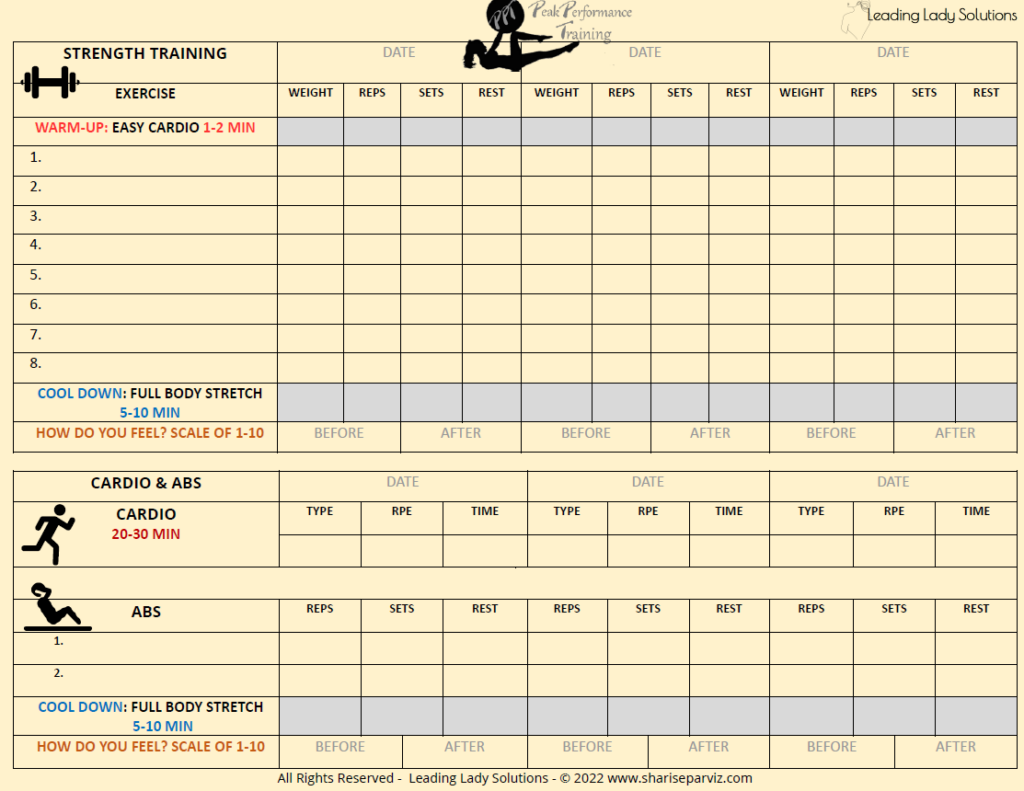
What is Fitness? Part 2
The Journey Continues
In Part 1, we explored the benefits of physical fitness, what it truly means, and covered the first component: cardiovascular fitness. If you missed it, catch up here. In Part 2, I’ll dive into the second and third components—muscular fitness and flexibility.
Many skip one or more of these three components. I get it—when I was younger, I hated stretching. I thought it was dull as dishwater. But now, I wish I’d started earlier. If you want to build or maintain fitness for health and longevity, each component is equally vital. So, don’t skimp.
Muscular Fitness (Component #2)
Muscular fitness involves building muscular strength (your ability to move and lift objects) and muscular endurance (how long your muscles can work before fatiguing).
Benefits:
- Powers movements and activities without tiring you out.
- Helps maintain healthy body weight by burning calories and boosting metabolism.
- Increases energy levels.
- Promotes restful sleep.
- Builds stronger muscles and bones, improving posture, easing back pain, and protecting joints.
- Enhances stability, balance, and flexibility, reducing injury and fall risks.
- Improves limb circulation.
- Makes daily tasks easier, boosting stamina for work and play—like chasing kids after a long day at work.
- Improves muscle tone for a shaplier appearance.
- Supports mood and brain health.
Exercises include:
- Resistance Training: Use external weights like dumbbells, weight machines, resistance bands, or even soup cans.
- Calisthenics: Bodyweight exercises like push-ups, jumping jacks, squats, or walking lunges.
Recommended Guidelines
- Full-body workout 2-3 times a week, performing 8-10 exercises with 8-12 repetitions each.
- For muscular endurance, increase to 12-15 repetitions.
- Alternatively, split upper and lower body workouts across different days.
- Combine resistance exercises and calisthenics for balanced strength and endurance.
Here are some exercises you might want to include in your next workout:
Lower Body:
Squats
Hamstring curls
Leg curls
Walking lunges
Calf raises
Upper Body:
Pull down
Rows
Chest press
Shoulder Press
Bicep curls
Tricep Dips
Finish with ab work such as:
Crunches
Bicycles
Plank holds
Flexibility (Component #3)
The third component of physical fitness is flexibility, which is the ability to move your joints and muscles freely through a wide range of motion.
Benefits:
- Lowers injury risk.
- Boosts circulation and blood flow.
- Keeps muscles and joints limber.
- Enhances performance in physical activities.
- Improves posture.
- Helps prevent and heal back pain from muscle stiffness.
- Calms the mind and reduces stress.
- Eases tension headaches.
Exercises include:
- Pre- and post-workout stretching
- Yoga
- Pilates
Recommended Guidelines:
- Pre-Workout Stretch: Dynamic stretching (active movements without holding the stretch) prepares muscles for activity. Spend 1-2 minutes before any workout.
- Post-Workout Stretch: Static stretching (holding a stretch for 10-30 seconds) builds flexibility and prevents soreness or injury. Allow 5-10 minutes post-workout.
- On non-exercise days, dedicate 5-10 minutes to stretching to improve flexibility and reduce muscle tightness.
- Warm-Up: Don’t stretch cold muscles; warm up for 5-10 minutes with light cardio (e.g., walking or jogging) if not exercising beforehand.
- Focus Areas: Target major mobility areas (calves, hamstrings, hip flexors, quadriceps) and upper body (shoulders, neck, lower back).
- Desk Breaks: If desk-bound, stand and stretch head-to-toe every hour to refresh body and mind.
- Weekly Sessions: Add 1-2 yoga or Pilates sessions weekly for deeper stretching.
Tips:
- Avoid bouncing during stretches; use slow, controlled motions.
- Never force a stretch—it should feel mildly uncomfortable, not painful.
- Breathe deeply to relax and enhance range of motion.
- Don’t overstretch; it can injure muscles and ligaments.
- Focus on your own progress, not others’—especially in yoga classes.

Getting Started
There you have it—the three components of physical fitness. Feeling overwhelmed? No worries. I tell my clients, and practice myself when easing back into fitness after a break, to take baby steps. You don’t need to tackle everything at once. Here’s a sample plan:
- Month 1: Start with cardio exercise.
- Month 2: Add one day of muscular strength/endurance training.
- Month 3: Include a yoga class.
Tip: Write it down—write down your daily workout plan, including exercises and reps, in a journal, and celebrate each completed session with a small reward, like a favorite song or a relaxing bath.
Benefit: Documenting and celebrating builds commitment and tracks progress, boosting motivation to stay consistent with your fitness goals.
Bonus Tip
Take it slow—build up as you feel ready, working toward the guidelines. The real magic happens when you make consistency your habit. Try new activities and do what brings you joy. Make it fun, and you’ll keep going.
Join My Wise & Wild Path
Learn more about charting your progress and grab a workout chart here
I’m all about no-fluff ways to live as God intended. Want more tips to fuel your holistic living journey? Discover SPBTV—Your Holistic Living Network for classes and programs that get you moving and living with joy. And if you want more quick tips for your holistic living journey? Sign up for my newsletter and check out Sharise Uncut. Let’s move, live, and thrive like we mean it.

